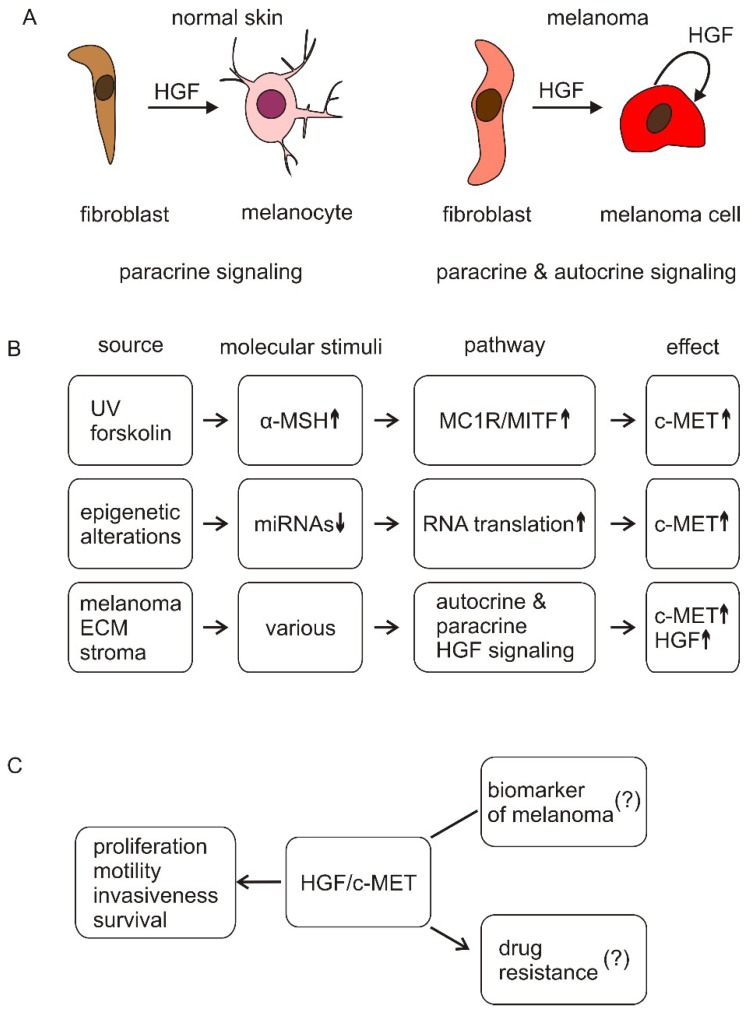Figure 2.
Simplified schematic illustration of the regulation of c-MET expression and activity in melanoma cells. (A) In normal skin, HGF is released mainly by fibroblasts to induce changes in melanocytes (paracrine signaling). In melanoma, autocrine signaling is also observed; (B) c-MET expression can be increased in melanoma cells through different mechanisms, including transcriptional regulation by MITF and reduced level of miRNAs targeting c-MET transcript. Activity of c-MET can be enhanced by elevated level of HGF produced and released by stromal cells (paracrine signaling) and melanoma cells (autocrine signaling) in response to diverse molecular stimuli, and with the regulatory contribution of ECM; Up- and down-arrows show enhanced and reduced levels of indicated molecules, respectively; (C) The enhanced activity of HGF/c-MET signaling in melanoma cells plays an important role in melanoma progression by supporting proliferation, survival, motility, and invasiveness, including niche formation. It is unclear whether HGF and/or c-MET are melanoma biomarkers, or whether the HGF/c-MET signaling contributes to the development of resistance to oncoprotein-targeted therapies.

